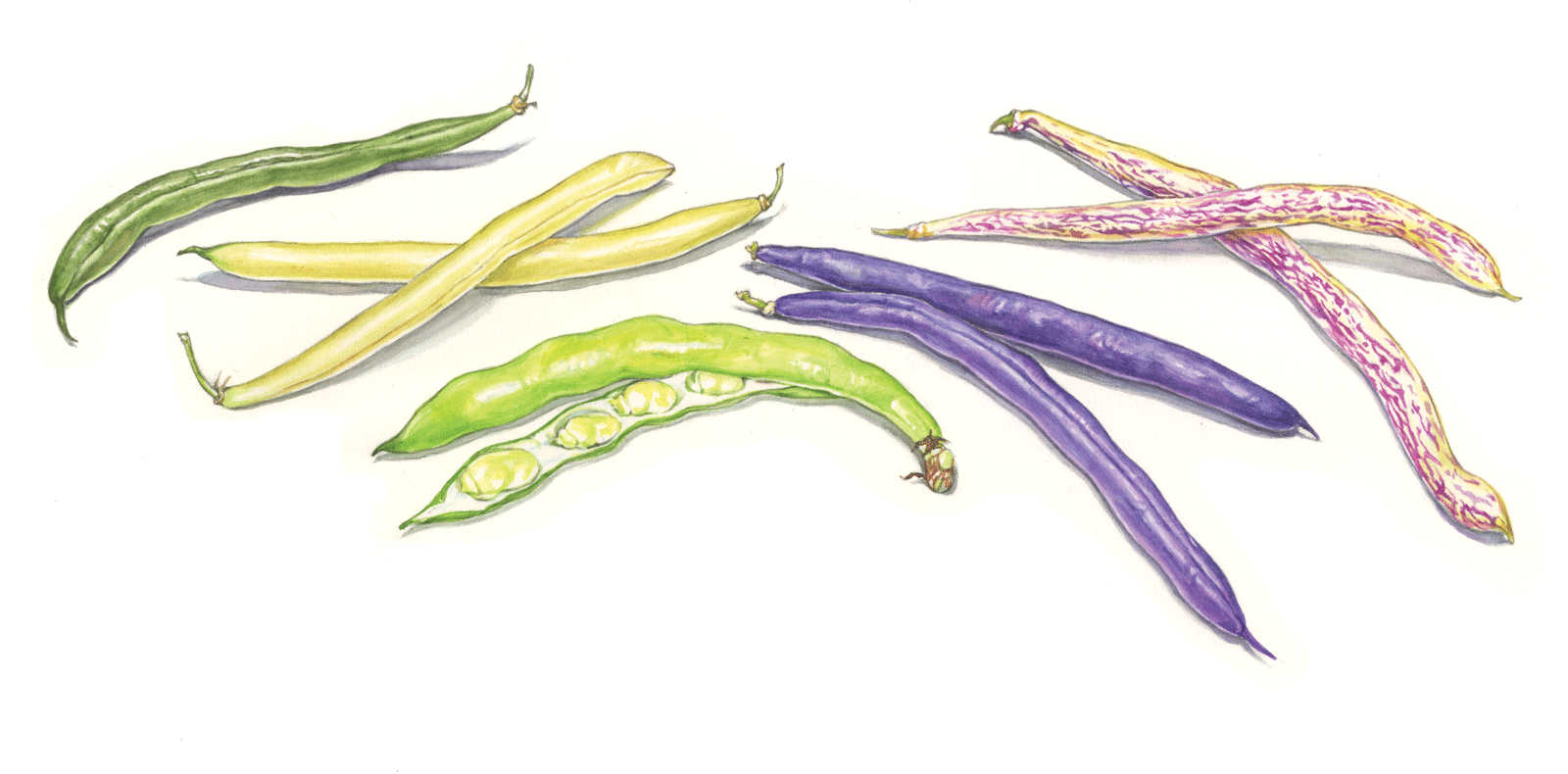What's In Season: Summer Beans
L to R: haricots verts, wax beans, fava beans, purple beans, dragon tongues/dragon lingerie.
Illustration by Edgar Stewart
Whether you plant neat little rows in your garden or you leave the growing and picking to your local farmer, fresh summer beans are a perennial favorite. They’re easy to prepare and so versatile—here are a few of my favorite ways to serve the many varieties of local beans.
Haricots verts
Basically French for “green beans,” these slender little babies are sweet and tender and as elegant as their name implies. Don’t overcook and be sure to use plenty of salt in the cooking water—season them well enough and you can eat them undressed in a steaming hot pile with a vinaigrette for dipping. They pair perfectly with tarragon and chervil in a butter sauce or with basil and a tangy lemony dressing, so buy extra and make them both ways.
Wax beans
I love to mix wax beans with green beans to play up the color contrast—a big tangle of yellows and greens, simply steamed and drizzled with the greenest olive oil I can find. Since they don’t discolor when dressed with acid like lemon or vinegar, I choose wax beans for most “green bean” salads—they soak up the dressing like a marinade and keep their pale yellow beauty for days. Toss with a couple varieties of cooked dried beans like borlotti or Jacob’s cattle and you have a much fresher and more modern take on the three-bean salad.
Purple beans
Vibrant deep violet when raw, these beans’ color fades to green when cooked, so you’re better off serving them freshly picked on your crudité plate. Crunchy, juicy, crisp—they’re every bit the “beaniest” bean of the summer harvest. Whip up a lemony feta dip with Greek yogurt and plenty of garlic and swipe your beans through it—this is easy summer “cooking” at its finest. No recipe required!
Dragon tongue or dragon lingerie
The bright maroon striations down these flat, pale yellow beans will fade when cooked, so they’re also a good candidate for the crudité plate (or simply snacking on out of hand—kids love them straight from the garden!). But once you try them all’Italiana—sliced into 1-inch lengths and slowly stewed in olive oil with tomatoes and basil—you’ll want to serve them this way at every summer meal. Three of the best summer ingredients melded together into one unforgettable dish—be sure to pass plenty of Parmigiano!
Fava—or broad—beans
It’s kind of a pain to shuck, blanch and peel every single little bean, and you need a whole lot of pods to yield enough bright green favas for a single dish, but they really are worth the trouble. Dressed simply in olive oil and garlic with a splash of lemon, they can be folded into rice or grain salads, mashed to spread on grilled toasts or added to a light broth at the last second for a springy minestra. By far the easiest way to prepare them is to grill young favas whole, then dress with herbs, oil and garlic; present a platter of grilled pods to your guests to eat like edamame—a very hands-on appetizer best enjoyed outdoors by the barbecue.
This story appeared in the Summer 2018 issue.

